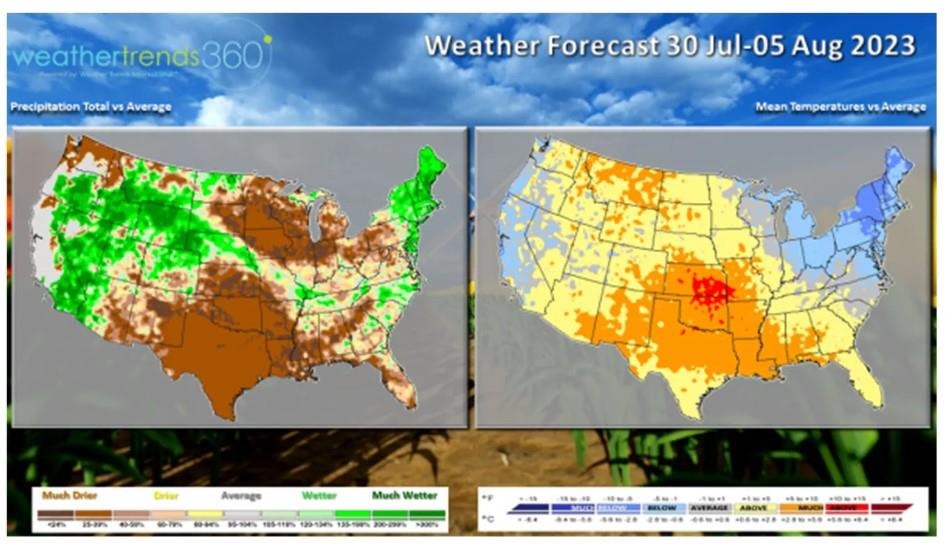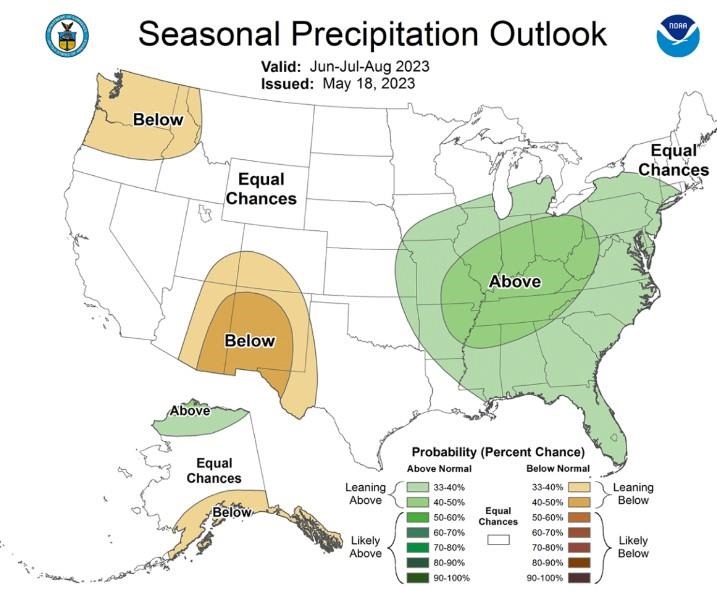South Dakota State University researchers from the Departments of Animal Science and Natural Resource Management have been awarded $1 million by the U.S. Department of Agriculture National Institute of Food and Agriculture Inter-Disciplinary Engagement in Animal Systems (IDEAS) program to fund a precision ranching research project.
The IDEAS program addresses the complexity of social, cultural, environmental, economic and technological challenges facing the food and agriculture system in the United States today by funding applied science that occurs at the intersection of multiple disciplines. For 2022, NIFA awarded $7.3 million in grants to eight universities, one of which was SDSU.
Hector Menendez III, assistant professor in the Department of Animal Science and SDSU Extension Livestock Grazing Specialist, and Krista Ehlert, assistant professor in the Department of Natural Resource Management and SDSU Extension State Range Specialist, are serving as the research and Extension principal investigators on the project, respectively. Other researchers on the grant include Department of Animal Science faculty members Dr. Jamie Brennan, Dr. Ken Olson, Dr. Amanda Blair and Dr. Zach Smith, Department of Natural Resource Management faculty member Dr. Josh Leffler and Ness School of Management and Economics faculty member Dr. Tong Wang. The grant enables the research team to address everyday issues that producers face on a landscape scale.
“This study will provide an unparalleled set of data for individual animals, the environment and economics, including significant knowledge gains into the feasibility of emerging precision ranching technologies,” said Menendez.

The 5-year project focuses on integrating precision management and measurement technologies to enhance cattle grazing on extensive rangelands. With a focus on applying a systems approach and virtual fence technology, researchers will incorporate several precision measurement technologies, including devices that will measure real-time daily body weights and water intake and greenhouse gas emissions from cattle gas loss via belching. The large quantity of data collected will maximize the efficacy of virtual fencing to enhance grazing systems, which creates higher quality cattle and increased economic viability for producers while gaining a better understanding of how to minimize negative environmental impacts and regenerate rangeland health and biological function.
Menendez, Ehlert and Brennan conducted a pilot season with virtual fence technology in 2021 to gather preliminary data for the grant proposal. The technology, which requires a three-way interaction between a base station, software and virtual fence collars worn around the necks of cattle, eliminates the manual labor required with traditional fencing systems.

To conduct the project, 135 yearling steers will graze at the SDSU Cottonwood Field Station where the virtual fence and precision measurement technologies will be utilized. Following the grazing season, the steers will be fed at the SDSU Southeast Research Farm until they reach slaughter weight where their carcass and meat quality characteristics will be measured and evaluated. This cycle will be repeated three times over the course of the project’s span to capture the typical life cycle of beef cattle in the Northern Great Plains.
“Our interdisciplinary team is unique in that we have combined range, animal, meat and ecosystem ecology scientists, as well as an economist, together in a highly functioning team that has not only the expertise and skills needed to execute the research, but also has a proven track record in providing innovative approaches for engaging and impactful Extension programs,” Ehlert said.
Information gathered from the project will be delivered to South Dakota ranchers through an SDSU Extension Precision Animal Learning (PAL) training program prior to the project’s completion in 2026.

“Entering the age of precision ranching means that opportunity costs can be more critically evaluated to the benefit of producers and their grazing lands,” said Ehlert.
“Data collected from this grant on greenhouse gases, livestock performance and water use will provide producers with accurate and credible numbers regarding environmental impacts. Numbers like these are currently non-existent or unavailable, meaning this research will help producers make improvements and demonstrate the sustainability of their products to consumers,” added Menendez.
Overall, the research team notes the importance of precision technology in providing ranchers with reliable data that can help drive management decisions, and they are excited to see the results of this work transform beef cattle production across the Northern Great Plains and beyond.
Source : sdstate.edu